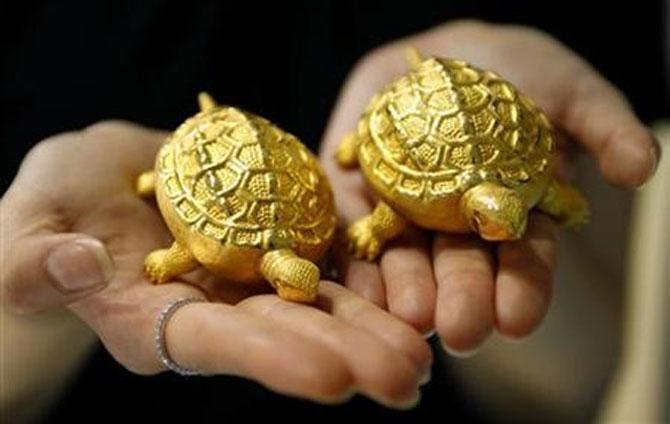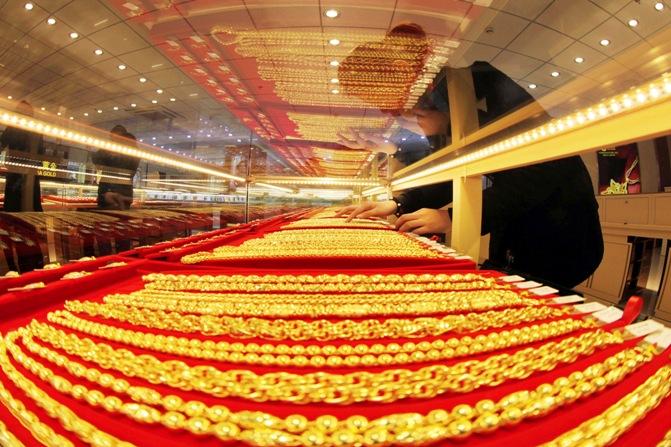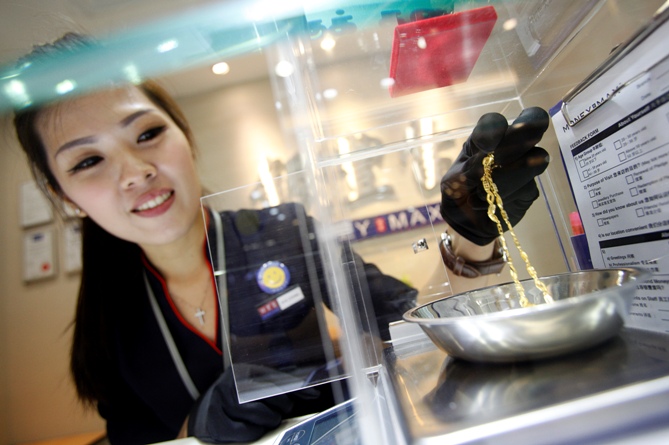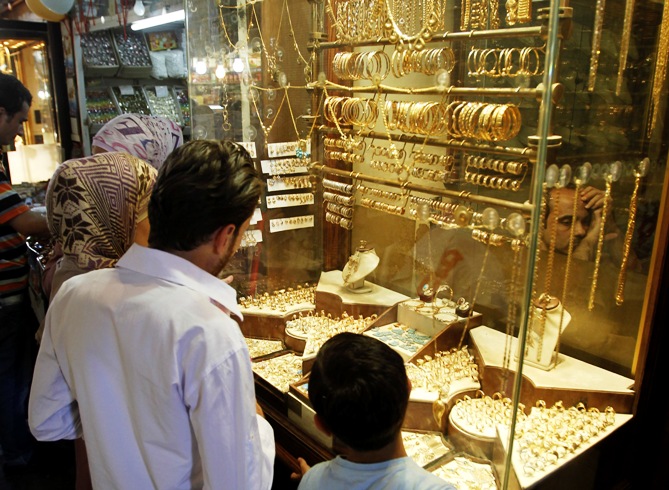 | « Back to article | Print this article |
Were international gold prices manipulated?
A new study suggests international gold prices might have been manipulated for the past decade.
This has led to calls for changes in the way metal prices are benchmarked.
The benchmark is set by the so-called ‘London Gold Fix’.
The fix involves price discovery via daily conference calls between five large dealers. The ‘Fix’ has been prevalent since 1919 and referenced globally by jewellers and other metal exchanges.
A draft research paper by Stern School of Business professor Rosa Abrantes-Metz and Albert Metz, a managing director at Moody’s Investors Service, claims gold trading shows manipulation.
Abrantes-Metz is well respected in this domain.
Her research revealed the now-notorious manipulation of the Libor (London Interbank offered rate), which underpins global capital flows.
Click NEXT to read further. . .
Were international gold prices manipulated?
The report says unusual spikes in the gold price-volume can be detected going back till 2004.
“The structure of the benchmark is conducive to collusion and manipulation and the empirical data are consistent with price artificiality,” the report claims.
“It is likely that co-operation between participants may be occurring.”
Gold is a liquid contract, with plenty of volume across multiple exchanges.
So, the price manipulation would ‘auto-correct’.
But the fixers would receive a premium due to being front-runners with inside information.
This is a very archaic method of price discovery.
The five majors -- Barclays, Deutsche Bank, Bank of Nova Scotia, HSBC and Societe Generale -- do two concalls a day.
Click NEXT to read further. . .
Were international gold prices manipulated?
Each call starts with dealers declaring how much they would be prepared to buy or sell at the current spot gold price.
A manual process of shifting prices and orders is then initiated.
The Fix price benchmark is set when buy-sell orders are more or less matched.
This opaque, manual process of price-fixing offers large scope for collusion and price-manipulation.
Given the capabilities of modern trading platforms, it makes sense to dump this system, and just switch to computerised matching of outstanding buy-sell orders.
These five dealers do control a lot of volume between them.
So, while the Fix allows manipulation, it also sets reasonable prices in terms of ensuring the gold market clears.
So, while this process might have allowed the big five to profit unduly, gold prices across exchanges would stay at reasonable levels.
Click NEXT to read further. . .
Were international gold prices manipulated?
This 2004-2014 period encompasses a massive bull run in gold.
Around late 2004, gold started a multi-year breakout from around the $400/troy oz level (a troy ounce = about 31 grammes).
The price was $1,800-plus by late 2011.
Subsequent corrections have seen a pullback till the $1,300-1,400 mark.
Prices bounced off support at the $1,200 level in December 2013.
The past year has seen the Indian government imposing controls on gold imports, which could have impacted global demand.
If there is an investigation into the Fix, it could also have interesting short-term effects on the price.
Fear triggered by investigations could push prices down.
Click NEXT to read further. . .
Were international gold prices manipulated?
But if the big five are temporarily less active, a lack of supply could also push prices up.
In the long run, gold prices are linked to global fears of inflation and a mistrust of fiat currencies.
Both factors continue to be significant.
The Chinese and Indian banking systems are under pressure.
At the same time, six years of easy money policies from the US Fed (backed by a more recent quantative easing from Japan) have put lots of liquidity into a global economy, which is growing slowly.
Click NEXT to read further. . .
Were international gold prices manipulated?
It’s difficult to tell in which direction gold prices might go.
Improved global growth prospects could mean downward pressure.
But the serious chances of a Chinese banking crisis could mean upward pressure.
A run on the rupee would also trigger gold demand, while an easing of Indian inflation could see easing.
The metal might see-saw between $1,200-1,400 if traders find it difficult to weigh up all these contradictory factors.
A breakout beyond either of these limits could mean a decisive trend develops.






